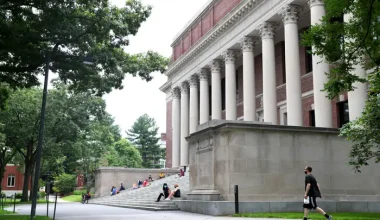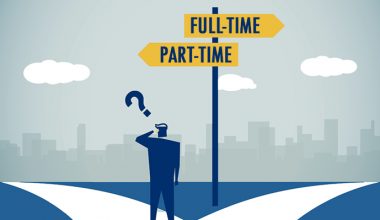Are you tired of being restricted from accessing websites during school hours? Do you want to know how to bypass school filters and unblock websites in 2023? If so, then you have come to the right place.
School filters are essential tools for maintaining a safe and secure learning environment. However, they can also be overly restrictive, preventing students from accessing legitimate websites relevant to their studies.
According to a recent survey, over 70% of students have tried to bypass school filters to access blocked websites. This statistic shows that school filters are a significant concern for many students.
This article will provide you with the most effective methods for bypassing school filters and unblocking websites. We understand the importance of being able to access relevant resources to excel in your studies, and we are committed to helping you achieve that. Our step-by-step guide will provide you with everything you need to know to bypass school filters and access blocked websites.
Table of contents
- Why Do Schools Block Certain Websites?
- Is it Legal to Bypass School Filters?
- What are the Risks of Bypassing School Filters?
- How Do School Filters Work?
- How to Bypass School Filters Using a VPN?
- How to Bypass School Filters Using a Proxy Server?
- How to Bypass School Filters Using the Tor Browser?
- How to Bypass School Filters Using a Mobile Hotspot?
- How to Bypass School Filters Using Google Translate?
- How to Avoid Getting Caught When Bypassing School Filters?
- FAQs
- Conclusion
- References
- Recommendations
Why Do Schools Block Certain Websites?
Schools block certain websites to ensure they do not expose students to inappropriate content that can harm their well-being and educational progress. These websites typically contain explicit, graphic, and harmful content such as pornography, violence, and hate speech unsuitable for students. Schools also block websites known to contain viruses and malware that can infect their network and compromise their security.
Schools are also responsible for creating a safe and secure learning environment that promotes positive values and fosters good behavior. Allowing students to access inappropriate content could undermine this objective and negatively impact the school community. Schools, therefore, use filtering software that blocks access to websites that align with their values and standards.
Furthermore, schools must comply with legal and regulatory frameworks that require them to protect students from online dangers such as cyberbullying, cyberstalking, and harassment. Schools can limit students’ exposure to these risks by blocking certain websites and protecting their privacy and dignity.
It’s important to note that schools do not block websites indiscriminately but rather use filtering software that applies specific criteria to determine which websites to block. These criteria may include the website’s content, URL, or IP address. Some schools may also use manual filtering, where a team of staff members reviews and evaluates websites to determine whether they are appropriate for students.
See Also: Top 10 Careers In Computer Science That Are Marketable In 2023
Is it Legal to Bypass School Filters?
Bypassing school filters is a controversial issue that raises questions about the legality of such actions. The answer to whether it is legal to bypass school filters is complex and depends on several factors.
Firstly, it’s important to note that schools have the right to control and regulate their networks and devices, including the Internet. This means they have the authority to implement filtering software and block certain websites they deem inappropriate or harmful to their students. Therefore, attempting to bypass school filters may be considered a violation of school policies and could result in disciplinary action.
However, the legality of bypassing school filters is unclear, depending on the specific circumstances and methods used. For example, using a VPN or proxy server to access blocked websites may not be illegal, but it could be considered a violation of school policies. In contrast, using hacking techniques to gain unauthorized access to the school network or devices is illegal and could lead to criminal charges.
Moreover, the legality of bypassing school filters also depends on the intent behind the action. If a student attempts to bypass filters to access inappropriate or harmful content, it could be considered illegal and result in disciplinary action.
However, suppose a student is attempting to access educational resources wrongly blocked by the filtering software. In that case, it may be considered a legitimate action protected by free speech and academic freedom.
See Also: How To Record Call On iPhone without App For Free.
What are the Risks of Bypassing School Filters?
Bypassing school filters can have significant risks and consequences for students. While it may be tempting to access blocked websites, it’s essential to be aware of the potential risks involved.
One of the main risks of bypassing school filters is that they can compromise the security of the school network and devices. Students may inadvertently introduce malware or viruses that can infect school devices and compromise sensitive data by using unauthorized software or methods to bypass filters. This can significantly damage the school’s network and put students’ personal information at risk.
Another risk of bypassing school filters is that it can lead to disciplinary action. Schools have the right to regulate the use of their networks and devices, and attempting to bypass filters may be considered a violation of school policies. This can lead to suspension, expulsion, or other disciplinary measures, which can have long-term consequences for a student’s academic and professional future.
Furthermore, bypassing school filters can expose students to inappropriate or harmful content. While it’s essential to have access to educational resources and free speech, bypassing filters to access inappropriate or harmful content can have significant consequences for students’ mental and emotional well-being. It can also expose them to cyberbullying, harassment, or online abuse.
Finally, bypassing school filters can also undermine the goal of creating a safe and secure learning environment. Schools implement filtering software to protect students from harmful or inappropriate content and to ensure that students can access educational resources safely and securely. Bypassing filters can compromise the integrity of the school’s network and devices and can create an unsafe and insecure learning environment for all students.
See Also: How To Hack Instagram Account
How Do School Filters Work?
School filters are software programs designed to regulate and monitor internet traffic on school networks. They work by blocking access to specific websites, content, and applications based on predefined rules and categories.
School filters typically use a combination of techniques to block content, including URL filtering, content filtering, and keyword filtering. URL filtering blocks access to specific websites based on their domain names, while content filtering blocks access to specific types of content, such as pornography or violence. Keyword filtering, on the other hand, blocks access to websites containing specific keywords or phrases considered inappropriate or harmful.
School filters also use categories to block access to websites and content that fall into specific categories, such as social media, gaming, or streaming websites. These categories are predefined and determined by the school or the filtering software provider, and they can be customized to meet the specific needs of the school or district.
School filters can also monitor and log internet activity on the school network. This allows administrators to track and monitor internet usage and identify potential security threats or violations of school policies. Schools may also use filtering software to enforce time restrictions on internet usage or to limit bandwidth usage during specific times of the day.
See Also: How To Turn Off Vpn On iPhone.
How to Bypass School Filters Using a VPN?
A VPN is one of the most effective ways to bypass school filters and access blocked websites. A VPN, or virtual private network, is a service that allows you to create a secure and private connection to the Internet. By encrypting your internet traffic and routing it through a remote server, a VPN can help you bypass school filters and access otherwise blocked websites.
Here’s how to use a VPN to bypass school filters:
- Choose a reliable VPN provider. Look for a VPN provider with fast speeds, strong encryption, and many server locations. You can use websites like vpnMentor or TechRadar to compare different VPN providers and read reviews from other users.
- Download and install the VPN software on your device. Most VPN providers offer software for Windows, Mac, iOS, and Android devices. Follow the instructions the VPN provider provides to install the software on your device.
- Connect to a VPN server. Once you’ve installed the software, open the VPN application and select a server location. Choosing a server location close to your physical location is best for optimal speed. Click the connect button to establish a connection to the VPN server.
- Access the blocked website. Once you’re connected to the VPN, you should be able to access the blocked website as if you were accessing it from a different location. If the website is blocked, try connecting to a different VPN server or clearing your browser cache and cookies.
See Also: 15 Best Laptops for High School Students in 2023 | Full Review
How to Bypass School Filters Using a Proxy Server?
If you want to bypass school filters, another option is to use a proxy server. A proxy server acts as a middleman between your device and the website you want to access. When you request a website, your device sends the request to the proxy server, which then sends the request to the website. The website then sends the response back to the proxy server, which forwards it back to your device. This way, the website sees the request from the proxy server, not your device, and the school’s filters are bypassed.
Here are the steps to follow when using a proxy server to bypass school filters:
- Find a reliable proxy server: Many free proxy servers are available online, but only some are safe and reliable. Look for a reputable proxy server that has been around for a while and has good reviews.
- Enter the proxy server’s address: Once you have found a proxy server you trust, enter its address in your browser’s settings. This will allow your browser to use the proxy server whenever you want to access a blocked website.
- Access the blocked website: With the proxy server set up, you can now access blocked websites by simply typing their URL into your browser’s address bar. The proxy server will send the request to the website, and you should be able to access it without issues.
See Also: How To Remove A Hacker From My iPhone.
How to Bypass School Filters Using the Tor Browser?
The Tor browser is a powerful tool that allows users to browse the Internet anonymously. It works by routing your internet traffic through a series of servers, making it difficult for anyone to track your online activity. This section will discuss how to use the Tor browser to bypass school filters and access blocked websites.
- Download and Install the Tor Browser
The first step to using the Tor browser is downloading and installing it on your computer. You can do this by visiting the Tor Project website and downloading the appropriate version of the browser for your operating system. Once downloaded, run the installation wizard and follow the prompts to install the browser.
- Configure the Tor Browser
After installing the Tor browser, you must configure it to work with your internet connection. Launch the browser and click on the “Tor Network Settings” button. Select the “Tor is censored in my country” option in the settings window and click “Connect”. This will configure the browser to use bridges and special Tor relays that are not publicly listed and are more difficult for network administrators to block.
- Access Blocked Websites
With the Tor browser configured, you can now access blocked websites. Launch the browser and type in the website address you wish to visit. If the website is still blocked, you can try using a Tor bridge by clicking on the onion icon in the top-left corner of the browser window and selecting “New Tor Circuit for this Site.” This will route your traffic through different relays and may help you bypass the school filter.
See Also: What Does VPN Mean On iPhone?
How to Bypass School Filters Using a Mobile Hotspot?
You can use a mobile hotspot if you’re having trouble bypassing school filters using traditional methods like VPNs and proxies. A mobile hotspot is a feature that allows you to use your smartphone or other devices as a Wi-Fi hotspot. Doing this allows you to bypass the school’s network and access blocked websites.
Here are the steps to bypass school filters using a mobile hotspot:
- Set up a mobile hotspot on your smartphone or other devices. The exact steps to do this will vary depending on the device you’re using, but typically you can find this option in the settings menu.
- Connect the device you want to use to the mobile hotspot. This could be your laptop, tablet, or another device.
- Once connected, you can access the Internet through the mobile hotspot. This will bypass the school’s network and allow you to access blocked websites.
It’s important to note that a mobile hotspot can use up a lot of data, so make sure you have a data plan to handle it. Additionally, some schools may have policies against mobile hotspots, so it’s best to check with your school’s IT department before using this method.
See Also: College Computer Buying Guide 2023: Best Laptop For Schooling
How to Bypass School Filters Using Google Translate?
Google Translate is a translation service provided by Google that can help users bypass school filters. This method involves using the translation feature of the service to translate a blocked website from its original language into another language, allowing access to the content.
To use Google Translate to bypass school filters, first access the Google Translate website. Once on the website, enter the URL of the blocked website in the left-hand box and select the language it is written in. Next, choose a different language for the translation in the right-hand box. Click on “translate,” and the website will appear in the selected language, allowing you to access its content.
It is worth noting that while this method can be effective in bypassing school filters, the translated version of the website may not be completely accurate, and the layout and functionality of the website may be affected. Additionally, school administrators may be aware of this method and may have taken measures to block access to Google Translate or other translation services.
See Also: Best Chromebook For Students in 2023
How to Avoid Getting Caught When Bypassing School Filters?
To avoid getting caught, it is essential to be careful when bypassing school filters. Here are some tips:
- Use private browsing mode: When browsing the Internet, use private browsing mode to prevent your browser from storing your browsing history.
- Clear your browsing history and cache: Clear your browsing history and cache regularly to remove any traces of your online activity.
- Use a different browser: Use a different browser than the one provided by the school to bypass filters. This way, you can avoid using the school’s network and reduce the chances of being detected.
- Use caution when accessing sensitive information: Avoid accessing sensitive information or personal accounts when using school networks. This information can be easily traced back to you and may result in disciplinary action.
- Avoid downloading suspicious files: Downloading suspicious files can compromise the security of your device and make it easier for school administrators to detect your online activity.
See Also: 10 Best and Efficient Projectors For Schools In 2023
FAQs
No, but they can block the majority of websites that are deemed inappropriate or distracting for students.
No, it is not ethical to bypass school filters as it is a violation of school policies and can lead to consequences for the individual.
Yes, school administrators can track students who bypass filters through monitoring software or network logs.
No, there is always a risk of getting caught when bypassing school filters, and it is not recommended to do so.
Conclusion
Bypassing school filters to access blocked websites can be a challenging task, but it’s essential to know how to do so to access relevant resources for your studies.
We’ve provided you with the most effective methods for bypassing school filters, including using a VPN, proxy server, Tor browser, mobile hotspot, and Google Translate.
Using these methods responsibly and with discretion is important to avoid getting caught and facing disciplinary action.
References
- Easeus.com – How to Unblock Websites on School Chromebook 2023
- Avast.com – How to Unblock Websites at School, Home, or Work
- Makeuse.com – How to Bypass a School Firewall: Tips and Warnings
- Top10vpn.com – How to Unblock Websites at School




